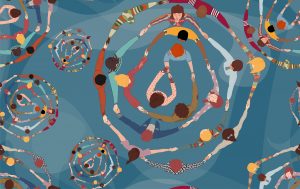How to Grow a Nonprofit or Cause
Processes for Incremental Improvement

Kaizen
Kaizen means constantly making small improvements to any kind of work, changes that over time add up to create dramatic results.

The Flywheel
The flywheel framework can help nonprofits grow by creating a self-sustaining cycle of positive momentum. It’s based on the idea that a small amount of effort applied consistently over time can lead to significant progress and growth.
“To create something that truly changes the world, we need to balance the two fundamental forces of growth: the incremental and the revolutionary.” — Reid Hoffman
Video: Disruptive vs. Incremental Innovation. 7 min.
Krsto Pandza discusses incremental, radical and disruptive innovation. 3 min.
Yin & Yang of Growth
How to grow a nonprofit or cause? By doing two seemingly opposite things at once. First, incrementally improve the programs, revenue streams, branding, public relations, and so on, that already work well or at least have potential. At the same time, constantly look for those breakthrough ideas that can take your cause to a new place.
Processes for Breakthroughs

Reframe the Problem
Reframing the challenge can help identify new angles or opportunities that were previously unseen and invite creative and innovative solutions that can lead to meaningful impact.

Appreciative Inquiry
Appreciative Inquiry (AI) is a process of inquiry and dialogue that focuses on strengths, successes, and potential. It is an approach to organizational development that seeks to identify and build upon the best in people, their organizations, and the relevant world around them.

Community Asset Mapping
Community Asset Mapping is a process developed in the early nineties to help communities discover their potentials by identifying resources, strengths, and capacities.

Design Thinking
Design thinking uses creative techniques to develop solutions. The focus is on generating ideas to find better ways to address the challenge at hand. It encourages collaboration, experimentation, iteration, user-centricity, and empathy in order to create a successful solution.

Positive Deviance
In facing a tough social challenge, positive deviance tells us to look for any outliers who may be like everyone else but who found a solution through their successful behavior.
The yin and yang of incremental change and breakthrough live in tension. In Focus: The Hidden Driver of Excellence, psychologist Daniel Goleman describes this in terms of exploitation and exploration:
Exploration means we disengage from a current focus to search for new possibilities, and allows flexibility, discovery, and innovation. Exploitation takes sustained focus on what you’re already doing, so you can refine efficiencies and improve performance. Those who exploit can find a safer path to profits, while those who explore can potentially find a far greater success in the next new thing—though the risks of failure are greater, and the horizon of payback is further away. Exploitation is the tortoise, exploration the hare.
Balance the needs. While Apple’s breakthroughs built their success, so did the kaizen. Each year devotees swarm the Apple events to see what improvements have been made on existing products, to watch the next turn of the flywheel. Blend these two and flourish!
Loonshots Audiobook Summary. 15 min.
Loonshots
Loonshots by Safi Bahcall challenges traditional thinking about nurturing radical breakthroughs. Bahcall, a physicist and entrepreneur, argues that the key is to create a separate group that operates under different rules than the rest of the organization. This group should be insulated from the mainstream organization, which tends to focus on short-term goals and incremental improvements. By contrast, the separate group can pursue long-term goals and focus on breakthrough innovations that might seem crazy or impossible to achieve.



